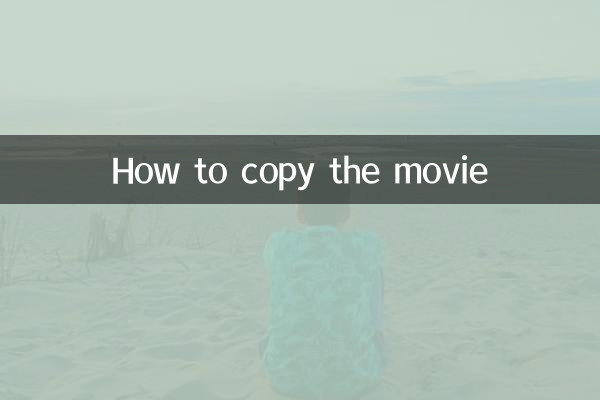How to copy movies: A full process analysis from creativity to commercialization
In today's rapidly developing film and television industry, copying a successful movie is not simply copying the plot, but requires systematic learning from multiple dimensions such as market analysis, script adaptation, production technology to commercial operations. This article will combine popular topics and hot content on the entire network for the past 10 days to disassemble the core logic of movie replication for you and provide structured data as a reference.
1. Market analysis of popular movie replication cases (data in the past 10 days)

| Movie name | Original box office | Remake box office | Adapted country | Key differences |
|---|---|---|---|---|
| "The Lost Her" | 920 million (original version of Russia) | 3.52 billion (Chinese version) | China | Local suspense setting |
| "put all one's eggs in one basket" | Documentary material | 3.84 billion | China | Real case adaptation |
| Oppenheimer | Original biography | $940 million worldwide | USA | Reconstruction of characters' perspective |
2. Four core elements of movie reproduction
1.Script deconstruction and reorganization: Use storyboard analysis tools to disassemble the narrative structure of the original movie, retain the "hook plot" (such as the underwater cage in "The Lost Her"), and replace culturally sensitive elements.
2.Visual language conversion: The AI face-swap technology that has been hotly discussed recently (such as the second application of Disney's Rocky Season 2) can reduce costs by 40%, but attention should be paid to copyright boundaries.
| Technical means | Application scenarios | Cost savings | Risk warning |
|---|---|---|---|
| Virtual production | Scene reappearance | 60-70% | Requires LED wall equipment |
| AI script generation | Dialogue optimization | 30% | Need for manual review |
3.Actor selection strategy: Referring to the recent popular casting dispute in "Sauce Garden Lane", copying movies should establish a "famous + cost-effective" actor matrix, and the pay for new actors can be controlled within 15% of the total project budget.
4.Promotional rhythm control: Analyzing the short video marketing data of "Sweeping Gang: Never Give Up". The movie replication project needs to start social media warm-up 6 months before the start of filming. The key nodes are as follows:
| stage | Duration | Core Action | KPI indicators |
|---|---|---|---|
| Concept period | 2 months | Topic Marketing | 500,000+ discussion volume |
| Shooting period | 3 months | Reuters exposed | 1 hot search per week |
3. Guidelines for legal risk avoidance
Recently, legal disputes in the film and television industry have increased by 23% year-on-year, mainly concentrated in the following three areas:
•Copyright adaptation: You must obtain the "movie adaptation rights" instead of just "text copyright", refer to the dispute case of the animation version of "Three-Body Problem"
•Music License: Remake classic movies requires re-acquisition of soundtrack authorization, and the cost may account for 5-8% of the budget
•Portrait Right: A tripartite agreement is required to be signed for the use of AI face swap technology (actor/technical party/producer)
4. Commercial monetization innovation model
According to Maoyan’s latest "2024 Film Derivatives Report", successful film replication projects should establish a multi-dimensional income matrix:
| Revenue channels | Percentage | Case | Key points of operation |
|---|---|---|---|
| Streaming Media Copyright | 35-50% | "Zhou Chu eliminates the three evils" | Window period control |
| Immersive performance | 12% | "Making a Fame" drama version | In-depth IP development |
The most noteworthy trend at the moment isShort video Erchuang License, through the official launch of a challenge (such as the "Hot Hot" skipping rope challenge), the popularity of the movie can be extended by 2-3 months, bringing about 8-15% box office increase.
Conclusion:The essence of film reproduction is an accurate cultural translation process, which requires a balance between originality, commerciality and technical feasibility. It is recommended that practitioners establish a "3D evaluation system" (Data data-driven, Differentiation differentiation, Delivery delivery capability) to stand out in the wave of remakes.

check the details

check the details